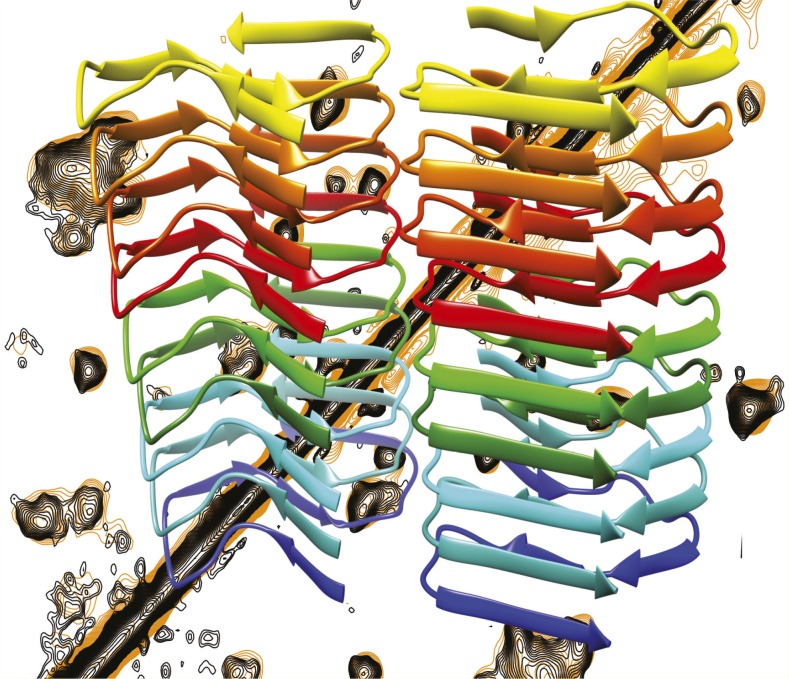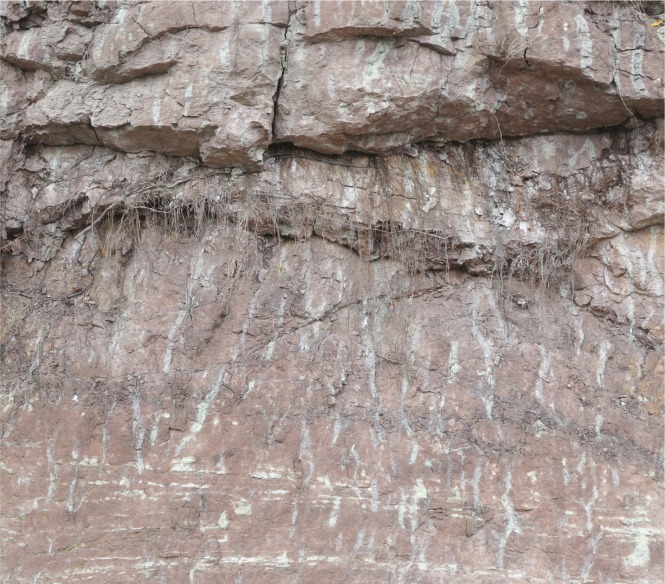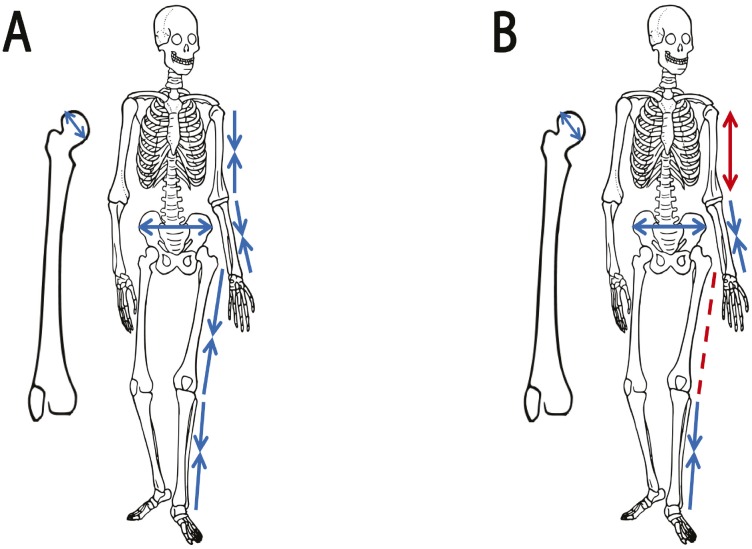3D structure of Alzheimer’s disease-associated amyloid fibril
The 3D NMR structure of the Aβ(1–42) fibrils is shown in a ribbon representation with each individual molecule colored differently in front of a [13C,13C]-correlation NMR spectrum.
Alzheimer’s disease (AD) is characterized by the development of extracellular plaques, which consist mainly of aggregates of the peptide amyloid-β (Aβ). The aggregates, called amyloid fibrils, appear to play an important role in disease progression and cell-to-cell transmissibility; a form of Aβ, called Aβ(1–42), is highly neurotoxic, aggregates rapidly, and is the dominant Aβ in AD plaques. Marielle Wälti et al. (pp. E4976–E4984) combined data from NMR spectroscopy and EM to determine the 3D structure of Aβ(1–42) at atomic resolution. The authors report that the 3D structure is composed of two molecules per fibril layer. Further, the authors report that residues 1–14 are partially ordered with residues 2–6 in a β-strand conformation, whereas residues 15–42 form four parallel intermolecular β-strands that wind around two hydrophobic intramolecular cores, forming a double horseshoe-like entity with buried hydrophobic side-chains. The authors suggest that the 3D structure may be responsible for Aβ(1–42) fibril replication in AD. Solving the structure of Aβ(1–42) could help elucidate the Aβ aggregation process and disease progression, and lead to the development of diagnostic markers and therapeutic drugs, according to the authors. — S.R.
Land modification by early vascular plants
Extensive rhizome traces from early vascular plant.
Colonization of terrestrial landscapes by vascular plants influenced atmospheric and geological processes, but limited representation of the belowground structures of early vascular plants in the fossil record has led to incomplete understanding of plant–soil interactions in early terrestrial ecosystems. Jinzhuang Xue et al. (pp. 9451–9456) examined fluvial sediment samples dated to around 411 to 408 million years ago, during the Early Devonian Period, from a geological formation in Yunnan Province, China. In the soil sediment samples, the authors found complex, network-like structures that resembled the belowground rhizomes of an extinct group of early vascular plants, indicating that the samples might represent the earliest rooted soils in Asia. Analysis of the sediment samples using soil morphology and geochemistry indicated that the plant material likely increased soil stability and contributed to soil accumulation and formation in the region. The early plant specimens appear to precede deep-rooted trees from the Middle Devonian Period, suggesting that the belowground structures of vascular plants might have been present in early terrestrial ecosystems, and that plant–soil interactions at an early stage of land colonization by vascular plants might have contributed to landscape modification on Earth earlier than previously thought, according to the authors. — C.S.
Climate warming and Lake Tanganyika fish catches
Fishing along the coast of Lake Tanganyika. Image courtesy of Saskia Marijnissen (United Nations Development Program).
Yielding more than 200,000 tons of fish each year, Lake Tanganyika in central Africa represents a crucial source of protein to people across the region. Although reported declines in fishery productivity mirror factors such as overfishing, deforestation, and rising water temperatures, few studies have sought to document these changes and draw causal links. Andrew Cohen et al. (pp. 9563–9568) analyzed sediment cores from the lake and constructed a roughly 1,500-year paleoecological record that tracks temperature and key proxies for the production of algae and fish. The record revealed that sustained warming has reduced mixing in the lake, stagnated algal production, and shrunk the oxygenated habitat of the lake’s key bottom dwellers, such as mollusks and crustaceans, by 38%. Furthermore, as temperature increases in the lake over the last 500 years correlate with decreasing numbers of fish and mollusk fossils, climate warming and a concomitant stratification of the lake’s water column are likely contributing to the current declining fish catches as well as endangering critical habitat that supports the lake’s biodiversity. The study demonstrates the impact of climate warming on a tropical lake ecosystem and suggests that intervention is needed to help sustain Lake Tanganyika’s vital contribution to the region. — T.J.
Mouse primordial germ-cell model illuminates epigenetic inheritance
Experiences, such as pain or environmental exposure to toxins, can imprint epigenetic marks on the genome that alter gene expression. Mounting evidence suggests that epigenetic traits can be transmitted from parents to subsequent generations, possibly via 5-methylcytosine (5meCs) residues. However, primordial germ cells (PGCs) undergo genome-wide DNA demethylation during fetal development to erase the sex-specific epigenetic status of imprinted genes. To examine whether 5meCs can sidestep such demethylation, Norikatsu Miyoshi et al. (pp. 9545–9550) developed a mouse model that uses PGC-like cells (PGCLCs), differentiated from pluripotent stem cells. The authors found that mouse PGCLCs effectively recapitulate the process whereby DNA demethylation erases epigenetic marks in the germline, reversing physiologically methylated cytosines and restoring the function of experimentally silenced genes in hypermethylated control regions. In addition, the model reveals examples of genomic repetitive sequences that exhibit significant resistance to genome-wide DNA demethylation. The findings demonstrate that PGCLCs can be used to investigate epigenetic erasure in the germline and offer a mechanism to study transgenerational epigenetic inheritance, according to the authors. — T.J.
Climate change and infectious disease
Prokaryotes occupy an essential role in maintaining life on Earth and represent the largest living biomass in the world’s oceans. Although numerous studies have shown that climate warming has increased ocean temperatures and altered marine ecosystems, few have examined the effect of these changes on marine prokaryotes. Luigi Vezzulli et al. (pp. E5062–E5071) obtained plankton samples, which had been collected and preserved by the Continuous PlanktonRecorder (CPR) survey between 1958 and 2011, and reconstructed a history of abundance of Vibrio species, including human pathogens. Focusing on nine regions in the North Atlantic and North Sea, the authors found that climate change correlates with planktonic changes. The authors also present statistical models that indicate that increasing sea surface temperatures promote long-term increases in Vibrio populations. Further, the authors analyzed reported cases of Vibrio infections in Northern Europe and the Atlantic coast of the United States that are known to be transmitted via species contained in the CPR samples. According to the authors, the evidence suggests that rising concentrations of Vibrio in seawater associated with climate warming can cause a surge in human infections via pathways such as recreational bathing and foodborne vectors. — T.J.
Constraints on human body form evolution
(A) Ecogeographic expectations of directional selection and (B) consensus pattern of directional selection found in analysis.
Variation in certain human body dimensions among populations correlates with latitude, suggesting that this variation is the result of climate-driven natural selection. However, morphological traits might not evolve independently because of underlying genetic correlations. Thus, it is unclear which traits evolved in direct response to selection and which evolved as responses to selection on correlated traits. Kristen Savell et al. (pp. 9492–9497) compared the variation in the lengths of four bones—humerus, radius, femur, and tibia—as well as femoral head diameter and pelvic width, among 14 human populations comprising more than 400 individuals. The authors used a previously developed model to estimate the directional selection on each trait. Consistent with the direction of the estimated selection, femoral head diameter and pelvic width increased, and radial and tibial lengths decreased with latitude. The femur and humerus also shortened with increasing latitude, despite minimal selection on the femur length and selection on the humerus to lengthen with increasing latitude. The results suggest that the examined traits evolved together as a result of a complex mix of evolutionary forces acting on the whole organism, according to the authors. — B.D.






